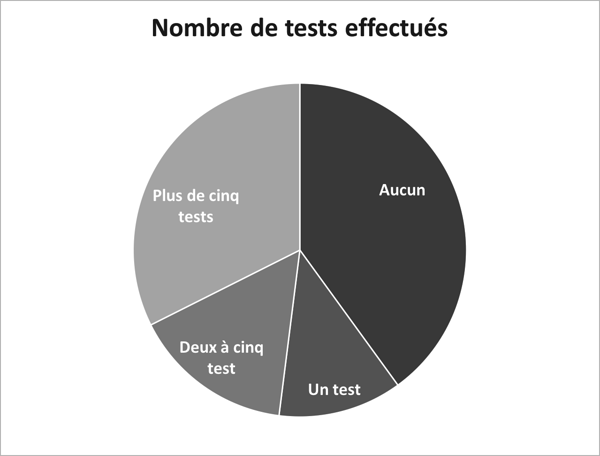November 20, 2018
Why do 40% of businesses fail to test their website or mobile apps
Interesting in listening to the market's views, we asked 100 decision-makers from the digital sector about their approach to (remote) user testing. What emerged was a picture of a contradictory situation, with practical obstacles on the one hand and undeniable benefits on the other.
Businesses struggle to organize user testing
Out of the 113 businesses questioned - made up of startups, agencies and advertisers -, 40% had not tested their mobile application or website in use prior to putting it online. And of the 60% that had, 20% had only carried out one test.
Even a single test in the life of a website or app, however, may prove insufficient. So why are so few usability tests organized?
A question of budget, time and organization
A lack of budget is the primary reason cited by 28% of the respondents, whether that be in terms of the size of the budget available or due to a lack of budget set aside in advance at the start of the project. The question of conducting user testing often still gets posed quite late in the process, and integrating it into the project either upstream (20% of businesses don't have time to test) or downstream (no time available to analyze the results, according to 9% of respondents) becomes problematic.
Then there are the various organizational difficulties cited, i.e. finding the right tools, recruiting the users, writing the testing protocol, organizing the tests, collecting feedback, carrying out the analysis, producing a report, and identifying the potential areas for optimization – all time-consuming tasks that require the coordinated participation of multiple actors.
These organizational questions bring us back to the lack of time cited earlier as the primary obstacle to testing, as it takes five weeks on average to arrange and organize all these tasks.
Despite these difficulties, the businesses questioned in our survey were clearly able to see the advantages these tests can provide.
The undeniable benefits of user testing
No matter whether it's carried out to provide reassurance for your teams and internal management or as a way of monitoring and controlling the quality of the contractors/service providers you've employed, at the end of the day, user testing allows you to save time in the execution of your project.
The business respondents place a clear emphasis on two benefits user testing offers, each of which were cited by one in four respondents. Namely, these are the ability to identify the tested website's or app's main areas for improvement and the ability to obtain validation prior to launch. These two reasons place user testing squarely in the realm of a “user-centric” approach to the process of improving your product.
You have no doubt asked yourself questions such as: “Which developments should be given priority?” or “Which feature needs to be improved and why?” The test results will provide you with concrete answers to these questions, and tell you which optimizations to proceed with.
You thus save time in terms of development, you put an end to unproductive internal conflicts, and you ensure that the decisions made by your business's “HIPPOs” don't take precedence over the needs of your users.
Ferpection helps you to implement a user-testing based approach
Because putting in place a user-testing-based approach by yourself remains a difficult and complex process, Ferpection has developed a flexible, effective solution that adapts to your own internal way of working.
-
Simple: you have nothing to organize.
-
Quick: One week versus five weeks when carried out internally within your own company.
-
Efficient: you are provided with a report containing all the feedback obtained and an operational action plan at the end of the test.
-
Qualitative: a community of 90 000 users equipped with the necessary technology (i.e. tablets, smartphones, etc.) and representative of the French population is made available to you.
-
Flexible: an easy set of measures to integrate into your development plan.
You will thus be able to concentrate your efforts on the essential: the process of continually improving your product in order to best meet the needs and expectations of your customers. Discover more on why and how to conduct usability testing, starting with remote user tests as part of our solutions.
To conclude with, let's hand the floor to our clients, who are better placed than we are to tell you about our solution. Here's what Frédéric Prud'homme, Product Manager at BeeOne Communication, has to say: “Ferpection worked with us in testing the new prototype version of our mobile app. The user feedback obtained enabled us to both validate and challenge the choices made, in a precise and objective manner."
All articles from the category: User research | RSS

